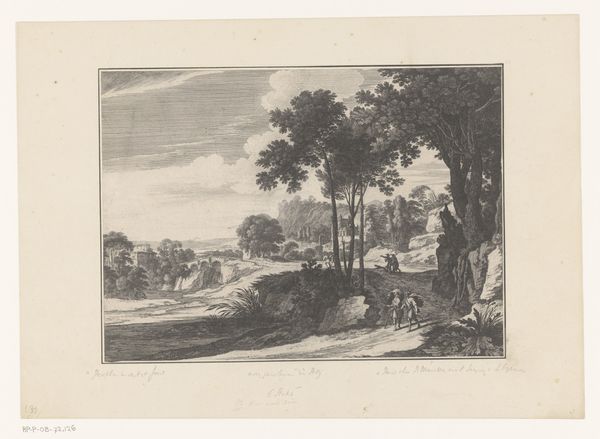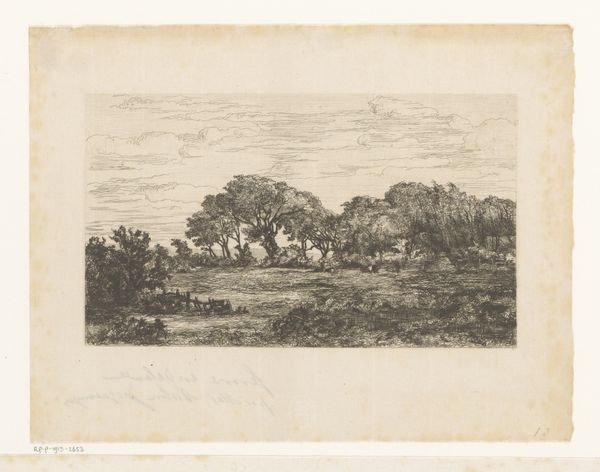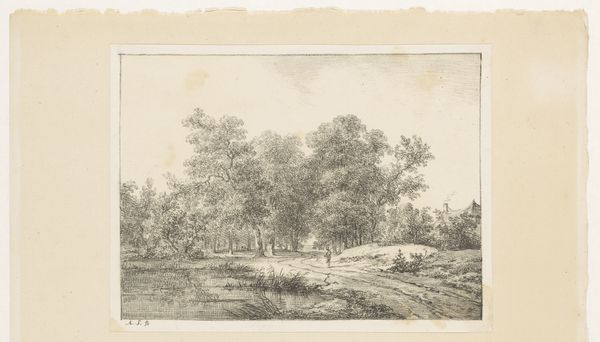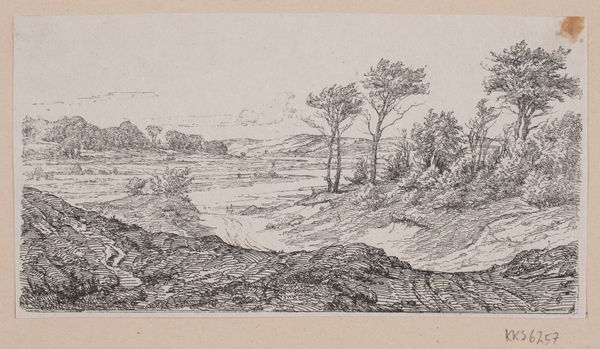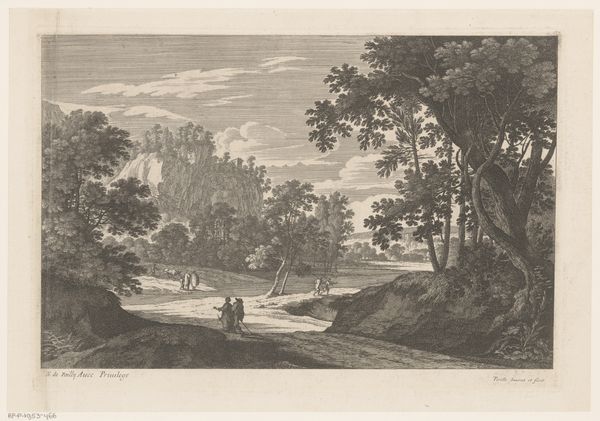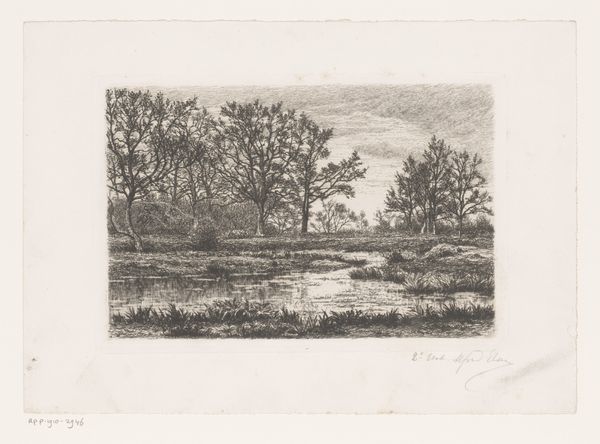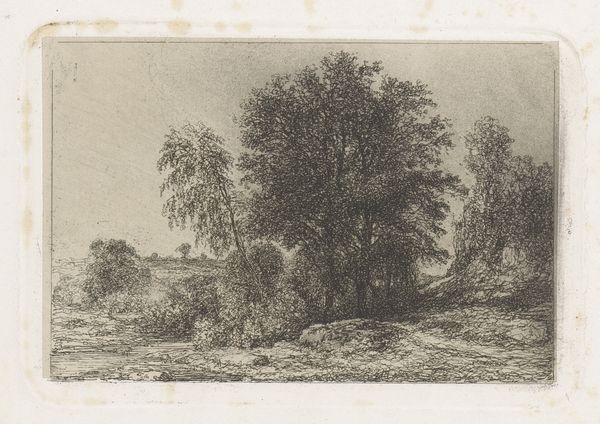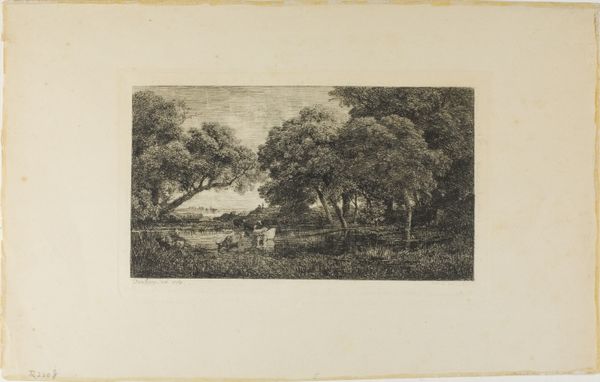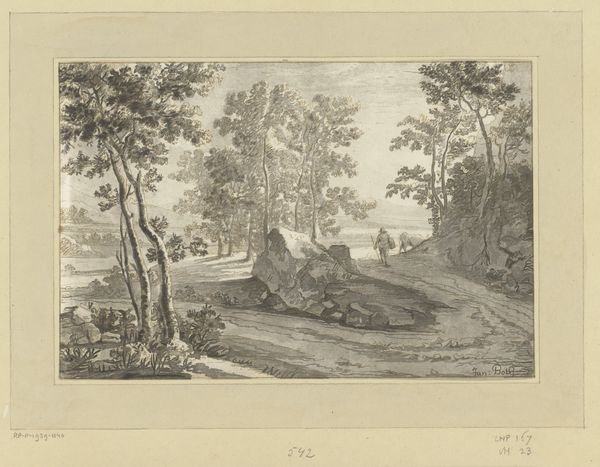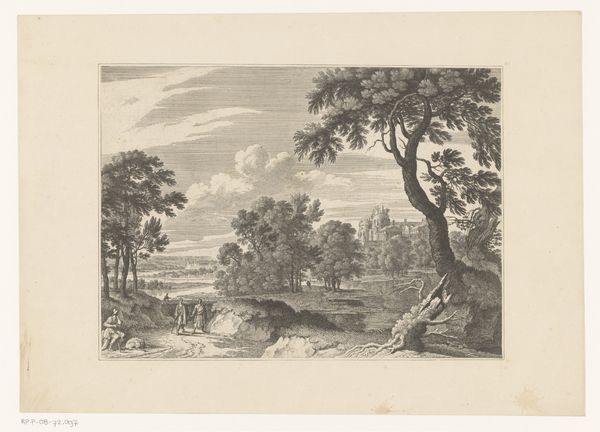
Dimensions: Image: 5 3/8 × 9 1/8 in. (13.7 × 23.2 cm) Plate: 8 3/16 × 11 7/16 in. (20.8 × 29 cm) Sheet: 11 5/16 × 14 3/16 in. (28.8 × 36 cm)
Copyright: Public Domain
Curator: This is Charles-François Daubigny’s "The Seine at Port-Maurin," created in 1870, currently residing at the Metropolitan Museum of Art. Editor: My initial feeling is stillness, a contemplative quietude. It’s amazing how Daubigny captures such depth with seemingly simple lines. Curator: Absolutely. He used etching to achieve that nuanced texture. Daubigny was a master of capturing light and atmosphere, drawing from plein-air traditions to represent a palpable emotional and environmental encounter with the French countryside. Editor: Knowing that it's an etching immediately makes me think about the labor involved. The repeated immersion in acid to build up the lines...it speaks to a different pace of production than we see today. But etching allowed artists to disseminate their work. Did this expanded availability transform access to Daubigny's imagery? Curator: It certainly did. Prints democratized art. Also, note the reflections on the water – very Impressionistic. What are we to make of the seemingly solitary sailboat and cottage on the far bank? Editor: I see a suggestion of transient human presence that makes the setting somehow even more still, even lonelier. The boat feels symbolic, possibly representing a voyage, or perhaps the simple beauty and practicality of transport along the Seine, as materials flow back and forth along the waterway. It feels significant, but its specific import escapes me. Curator: Perhaps, Daubigny intended it to. This piece was created during the Franco-Prussian War, a turbulent period that left a scar on the cultural consciousness. So what appears as a charming rural scene may evoke deeper anxieties. Editor: Considering that social and political context really shifts how I experience it. I initially overlooked what is included but now realize how very little is shown about people or activity in the work; as the absence begins to dominate the impression it makes, I realize this image is far less sentimental than it initially seemed. Curator: A stark reminder that even landscape can bear witness to human turmoil. It makes you wonder what Daubigny might've seen while rendering this vista in real-time. Editor: It really highlights how materials and the act of making aren't separate from the meaning embedded in a piece, or from cultural trauma as it happened at that time. Thanks, as always, for these added levels of appreciation.
Comments
No comments
Be the first to comment and join the conversation on the ultimate creative platform.
